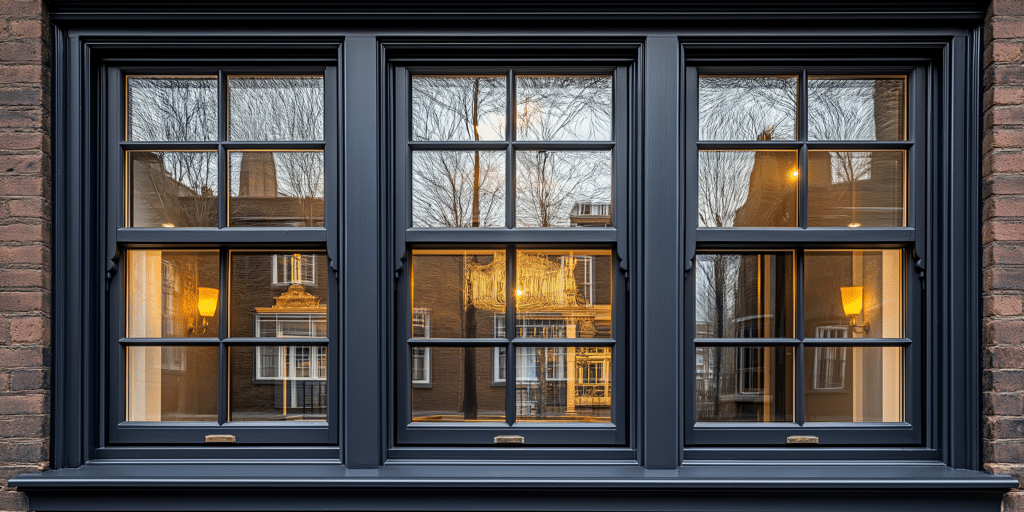Introduction to Sash Window Frame Jig Assembly

Sash window frame jig assembly is essential in crafting, restoring, and maintaining traditional sash windows, a hallmark of British architecture. By using a sash window jig, professionals ensure precise alignment and secure assembly of each component—the stiles, glazing bars, or meeting rails—ultimately enhancing the window’s durability and aesthetic appeal. Particularly relevant in Victorian and Georgian sash windows, jig assembly allows craftsmen to meet both historical accuracy and modern performance standards.
Many industry experts have praised jigs for streamlining complex window assembly processes, noting that they “greatly reduce assembly time while boosting structural integrity.” Experts from This Old House also highlight the jig’s role in reducing manual errors, particularly in high-volume sash window production, making it invaluable for carpenters and restoration specialists.
Understanding the Purpose of a Frame Jig in Sash Windows
A sash window frame jig is vital for achieving consistent, precise alignment. It acts as a structural guide, ensuring each component is securely positioned, essential in maintaining the window’s durability and functionality. Experts underscore the jig’s role in enhancing symmetry and maintaining alignment during installation, which he describes as “crucial for ensuring both longevity and operational ease.”
In addition, frame jigs streamline the production process for sash windows, especially when multiple units require identical dimensions. The jig reduces alignment issues and boosts productivity, making it invaluable for both restoration and new construction projects.
Essential Tools and Materials for Frame Jig Assembly
Successful sash window frame jig assembly requires specific tools designed to support accurate cutting, alignment, and securement of components. The primary tools include a mitre saw, sash clamps, adjustable square, and digital angle finder, which help maintain exact measurements. Durable materials such as high-tensile steel are recommended for building stable jigs, enhancing both stability and repeatable accuracy.
Professionals recommend selecting non-slip materials to prevent unwanted movement, particularly in larger, heavier sash frames. Safety gear such as gloves and eye protection is essential when handling glass and power tools to minimise injury risks.
Step-By-Step Guide to Setting Up a Sash Window Frame Jig

Setting up a sash window frame jig involves detailed measurement and securement to ensure each part fits precisely. This step is critical for maintaining the quality and functionality of the finished window. Experts suggest using tools like a digital protractor to verify alignment and prevent misalignment, which is crucial for achieving smooth operation in both single and double-hung sash windows.
This Old House advises marking key dimensions on the jig and double-checking alignment before securing with clamps or bolts to prevent shifting during assembly, especially when handling heavier window frames.
Adjusting and Calibrating the Jig for Precision Crafting
Adjusting and calibrating the jig for varying sash window dimensions is essential for precise assembly. Adjustable jigs with sliding arms accommodate different sizes and configurations. Regular calibration with a dial gauge is recommended to maintain consistency, especially in repetitive projects.
Incremental alignment checks with a square or spirit level are encouraged to avoid alignment errors, which could impact sash functionality. These techniques ensure that even minor adjustments maintain the jig’s accuracy over multiple assemblies.
Aligning Sash Window Frames Using a Jig
Aligning sash window frames accurately within a jig is crucial for maintaining symmetry and functional integrity. Industry professionals, like those from Historic England, highlight that accurate alignment reduces common issues like air leaks, misalignment, and rattling, all of which can compromise the window’s appearance and efficiency. A jig provides the structural support needed to keep each frame square, allowing for uniformity and reliable results, especially in large-scale projects where multiple windows must match exact specifications.
Additionally, sources such as Woodworker’s Journal note that laser markers or built-in guides on modern jigs make it easier to achieve precise alignment across all components, further enhancing the durability and aesthetic quality of the finished window. Expert window installers recommend double-checking alignment at each stage to prevent future adjustments.
Securing Sash Window Components During Jig Assembly

During assembly, the jig securely holds critical components such as sash weights, balances, and locks. This reduces the risk of alignment errors and improves the durability of the final structure. Securing components like weatherproofing seals within the jig maintain their placement and enhance their effectiveness, reducing drafts and increasing energy efficiency.
Professionals often use additional clamps to prevent movement, particularly when installing larger or double-glazed windows, which may require additional stability during assembly. This process is essential for long-term stability and functionality, as it helps each sash component fit tightly within the frame, supporting smooth operation.
Troubleshooting Common Issues in Sash Window Jig Assembly
Despite careful preparation, alignment or measurement errors can occur during sash window jig assembly. Addressing these challenges quickly helps maintain the quality and accuracy of the finished window. It is suggested that common issues like component slippage and minor misalignments be addressed by using additional clamps and realignment techniques, ensuring each frame meets specified standards.
Additionally, expert sources recommend regular inspections for each component’s alignment and structural integrity to prevent future issues. These checks ensure minor issues can be corrected without significant rework, streamlining the assembly process.
Ensuring Safety and Stability in Jig Assembly
Safety and stability are paramount during sash window jig assembly, particularly when working with heavy frames and precision tools. Industry safety guidelines recommend securing the jig firmly to a stable surface and using non-slip materials to prevent unwanted movement, which can lead to serious alignment issues or even accidents. According to guidelines from The UK Health and Safety Executive (HSE), wearing appropriate safety gear such as gloves, eye protection, and ear defenders is essential, especially when using power tools or glass panels.
Experts suggest using proper lifting techniques and, where necessary, enlisting additional help to handle heavy-duty jigs. Reinforcing the jig with non-slip pads, clamps, or braces further enhances stability, helping prevent accidental shifts during assembly.
Best Practices for Consistency Across Multiple Sash Frames

Consistency is crucial when producing multiple sash window frames, particularly for heritage restorations where uniformity is key. Industry professionals recommend keeping detailed records of jig settings and dimensions to ensure each window frame is identical. In addition, using a jig in mass production improves accuracy and uniformity, enabling the replication of intricate window designs with minimal variation.
Quality control is integral in maintaining high standards across multiple frames. Experts from the British Woodworking Federation advise routine checks and documentation for each frame, allowing for immediate correction if any inconsistencies are detected.
Maintenance and Storage of Sash Window Frame Jigs
Regular maintenance ensures that sash window jigs remain accurate and durable over time. Cleaning the jig after each use removes dust and debris that can accumulate and cause misalignment. Recommended storing jigs in a dry, climate-controlled environment to prevent warping or rusting, particularly with metal jigs used in larger-scale production.
Routine inspections allow for early identification of any damage, ensuring that all components, such as clamps and calibration tools, remain in good condition. Replacing worn parts promptly preserves the jig’s accuracy and extends its useful life.
Final Thoughts: Maximising Efficiency and Accuracy with Frame Jig Assembly
The frame jig is a powerful tool that enhances both the efficiency and quality of sash window production. By reducing alignment errors and standardising assembly, a jig supports craftsmen in creating durable, high-quality windows that meet both aesthetic and functional needs. Through routine calibration, regular maintenance, and adherence to best practices, professionals can maximise the jig’s benefits, ensuring that each window reflects both traditional craftsmanship and modern precision.
Crafting a sash window with accuracy and care using a jig preserves architectural heritage and extends the window’s lifespan, providing value for years to come. Combining traditional techniques with modern tools, like frame jigs, is important to maintain historical integrity while meeting contemporary performance standards.




